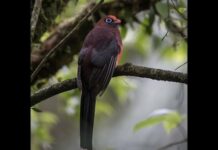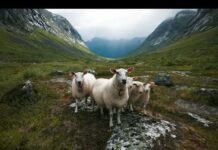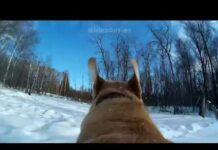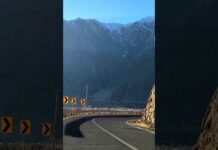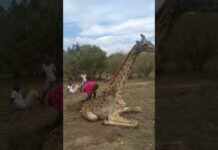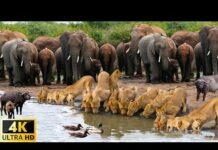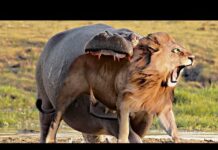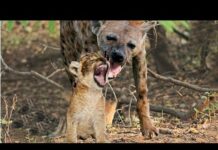#gilgitbaltistan
#wildlifedocumentary
Gilgit Baltistan is a region located in the northernmost part of Pakistan, and it is known for its incredible natural beauty and diverse wildlife. Here are some of the wildlife species that can be found in Gilgit Baltistan:
Snow Leopard: Gilgit Baltistan is home to one of the world’s largest populations of snow leopards. These elusive cats are found in the high-altitude mountainous regions and are well adapted to the harsh environments.
Himalayan Ibex: This wild goat is a common sight in the mountainous regions of Gilgit Baltistan. They have long curved horns and are well adapted to the rocky terrain.
Markhor: The national animal of Pakistan, Markhor is a large species of wild goat that is found in the high-altitude areas of Gilgit Baltistan. It is known for its impressive spiraled horns.
Brown Bear: The Himalayan Brown Bear is found in the Gilgit Baltistan region, particularly in the Deosai National Park. They are large, powerful animals and are listed as an endangered species.
Himalayan Tahr: This wild goat is found in the mountainous regions of Gilgit Baltistan and is known for its thick, shaggy coat.
Snow Partridge: A bird that is found in the high-altitude areas of Gilgit Baltistan, the Snow Partridge is well adapted to the cold, harsh environments.
Golden Eagle: This majestic bird of prey is found throughout the region and is known for its impressive size and hunting abilities.
Marco Polo Sheep: Also known as the Pamir Argali, this wild sheep is found in the mountainous regions of Gilgit Baltistan. It is the largest species of wild sheep in the world and is known for its massive curved horns.
These are just a few of the many wildlife species that can be found in Gilgit Baltistan. The region is home to a diverse range of animals, and it is a popular destination for wildlife enthusiasts and nature lovers.
Like many other regions around the world, wildlife in Gilgit Baltistan face numerous threats, including:
Habitat loss and fragmentation: The increasing human population and expanding settlements in the region have resulted in habitat loss and fragmentation, making it difficult for wildlife to move and find suitable habitat.
Poaching and hunting: Poaching and hunting of wildlife for meat, trophies, and traditional medicine are major threats to wildlife in Gilgit Baltistan, especially to animals like the snow leopard and markhor.
Climate change: Climate change is affecting the natural habitats of wildlife in Gilgit Baltistan, with changes in temperature and precipitation patterns leading to altered migration patterns and food availability.
Human-wildlife conflict: As humans and wildlife come into closer contact, conflicts arise over resources, leading to retaliatory killings and habitat destruction.
Invasive species: Invasive plant and animal species can outcompete and displace native species, leading to a loss of biodiversity.
Infrastructure development: The construction of roads, dams, and other infrastructure can fragment wildlife habitats and increase human-wildlife conflicts.
Efforts are being made to mitigate these threats through conservation efforts, such as habitat restoration, anti-poaching measures, and education campaigns to promote coexistence between humans and wildlife.

